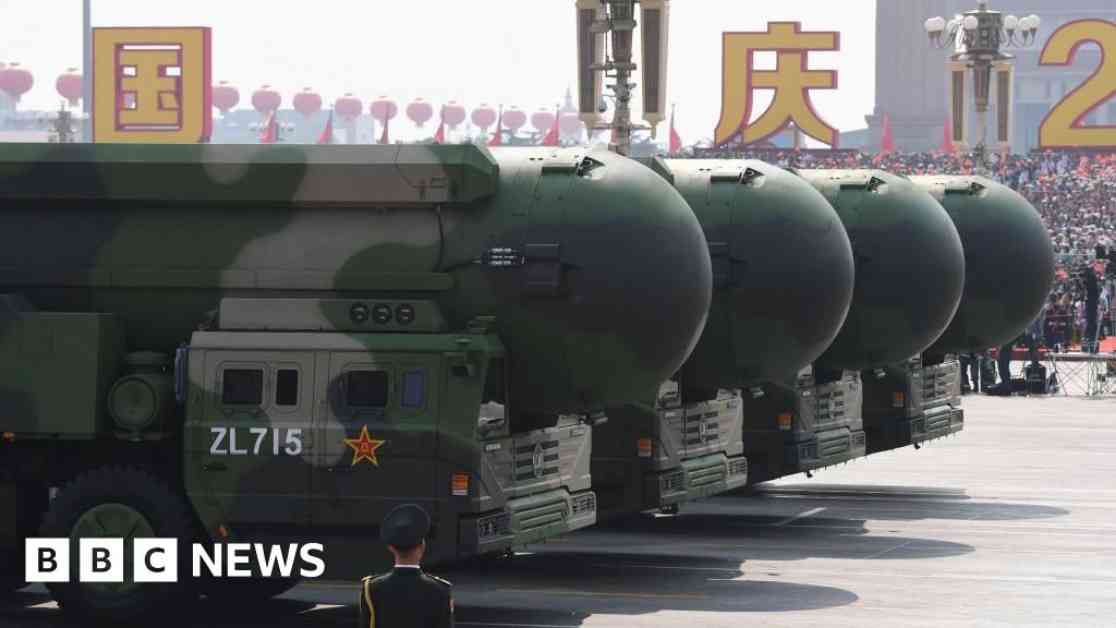China made headlines this week with the news of a rare test-firing of an intercontinental ballistic missile (ICBM) into the Pacific Ocean. The launch, which took place on Wednesday, marked China’s first test of this kind in over 40 years. While Beijing insists that the launch was routine and not directed at any specific target or country, the action has sparked protests from neighboring nations and raised concerns across the region.
International Response to China’s ICBM Test
Japan, Australia, and New Zealand were among the countries quick to express their concerns following China’s ICBM test. Japan stated that it had not received any prior warning about the launch, leading to serious concerns about Beijing’s military build-up. Australia described the action as “destabilizing” and raised the risk of miscalculation in the region, seeking an explanation from China. New Zealand also voiced its unease, calling the test “an unwelcome and concerning development.”
The launch has contributed to tensions in the Indo-Pacific region, with analysts pointing to China’s increased long-range nuclear capabilities. The U.S. had previously warned of China’s nuclear arsenal expansion as part of a defense upgrade, highlighting the potential threat posed by China’s growing missile capabilities. While China’s nuclear arsenal is still estimated to be smaller than that of the U.S. and Russia, the recent ICBM test underscores the country’s efforts to enhance its long-range strike capabilities.
Analysis of China’s ICBM Test
Experts noted that China’s decision to conduct an international test of an ICBM is unusual, as the country typically tests such missiles internally. The test-firing of an ICBM into international waters represents a significant departure from China’s previous testing practices and signals a shift in its approach to demonstrating its military capabilities. Analysts believe that the test serves as a reminder to the region and the U.S. that nuclear dynamics in Asia are evolving rapidly.
While China has maintained that its nuclear arsenal is solely for deterrence purposes, the recent ICBM test has raised questions about the country’s intentions and its strategic objectives. Some analysts view the test as a signal to the U.S. and its allies in the region, highlighting China’s growing military capabilities and its ability to engage in conflicts on multiple fronts simultaneously.
Regional Implications of China’s Military Build-up
The ICBM test comes amid heightened tensions between China and its neighbors, particularly in the South China Sea and Taiwan Strait. China’s assertive actions in these contested regions have raised concerns among regional powers, including Japan and the Philippines. Recent incidents, such as clashes between Chinese and Philippine vessels and airspace violations near Taiwan, have underscored the potential for escalation in these volatile areas.
The relationship between Beijing and Washington has also faced challenges, with ongoing disputes over arms sales to Taiwan and nuclear arms control talks. China’s suspension of nuclear arms control talks with the U.S. in response to continued arms sales to Taiwan reflects the growing tensions between the two superpowers. The Pentagon’s estimates of China’s nuclear arsenal size and projections for future growth further highlight the potential for increased competition in the nuclear realm.
In conclusion, China’s recent ICBM test has raised alarms across the region and underscored the evolving dynamics of nuclear deterrence in Asia. The test serves as a stark reminder of China’s growing military capabilities and its willingness to assert its strategic interests in the region. As tensions continue to simmer in the Indo-Pacific, the international community will be closely monitoring China’s future actions and their implications for regional security and stability.
